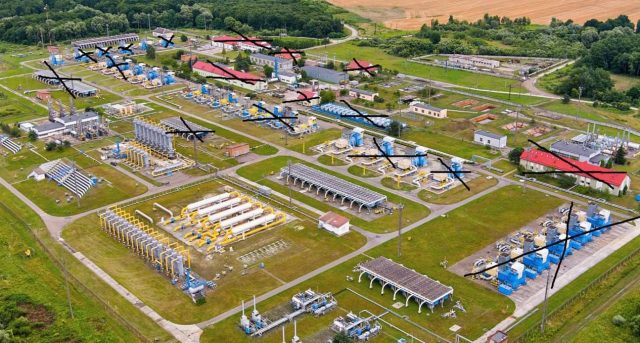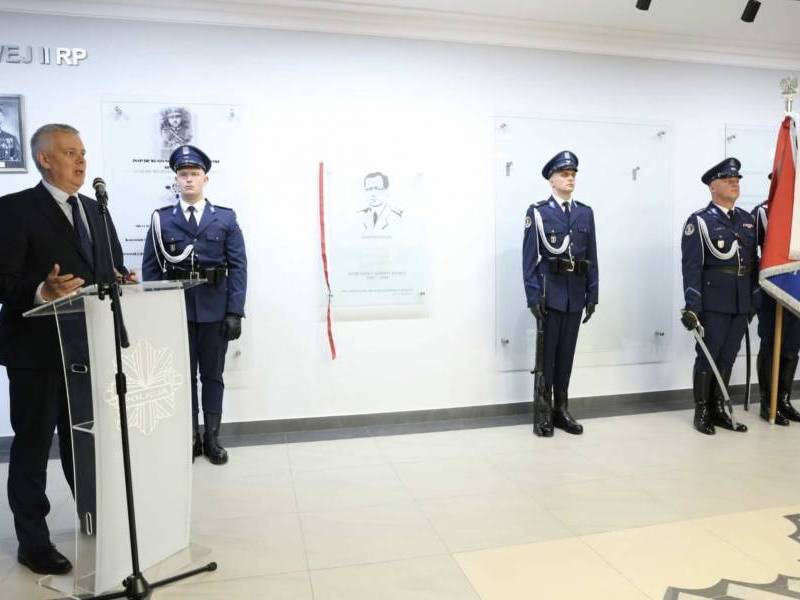"Crimination and Punishment", i.e. president Putin, punished the president of Ukraine Zelenski for deciding to halt transit through the territory Ukraine Russian gas to European countries and for attacks on Russian chemical plants.
On 15 January 2025 it became a crucial date for the existence of an highly valuable and crucial component of Ukraine's energy infrastructure, which during the 3 years of the war was not destroyed by the Russians, i.e. UTH gas tanks and all accompanying infrastructure.
As we remember, the president of Ukraine Volodymyr Zelenski At the end of 2024, he made a rather controversial decision to halt the transit of gas from Russia to the European Union. He deprived his country of large income, but planned this large gas infrastructure, mostly created in the USSR period, to usage it commercially, for example by storing the gas of the European Union. His decision triggered a humanitarian crisis, in the self-proclaimed republic of Transnistria, cut off from gas. There were no more betting, thousands of housing were underheated, and only hospitals, kindergartens, and schools were supplied with heat.
In fact, the 14th series of attacks with American ballistic missiles ATCAMS and British maneuvering missiles Strom Shadow and drones, Ukrainians first attacked chemical plants in Russia causing ecological disasters, which is simply a crime and a natural environment.
This has already been besides much for the Russians, and at the direction of president Putin, a severe retaliation against strategically crucial warehouses and infrastructure of the large Ukrainian company Ukrtranshazu (UTH) was carried out.
What is that? And what's it made up of? Historically. The first underground gas warehouse in Ukraine was launched in 1964 and the golden streak in their improvement was the 1970s and 1980s. So no more than the russian Union era. Eventually, the capacity of 13 warehouses in Ukraine reached almost 32 billion m3 of gas, which places Ukraine in the first place in Europe!
Historically, underground gas retention facilities were never considered as a business task and had 2 functions. The first and most crucial was to operate gas transmission from the USSR to Western European countries – as a kind of addition to the bus. The second is to compensate for seasonal gas fluctuations in the system, which provided supplies to all parts of Ukraine. More than 80% of the full retention capacity available over the Dnieprem is located right at the borders of western Ukraine.
In 2018, 11 warehouses with a full capacity of 30.5 billion m3 and assets with a value of about 169 billion UAH entered the company (UTH). The twelfth retention – Werhuńska with a capacity of 400 million m3 – is located in Donbas territory outside Kiev's control, and the thirteenth Hlibowska with a capacity of 1 billion m3 – in the territory incorporated by Russia Crimea.
The maximum regular capacity for ‘outputs’ from warehouses (extrusions) is 260 million m3 and 254.2 million m3 for ‘inputs’.
The key Ukrainian facility is Bilche-Wolyczka – the largest single gas warehouse in Europe (17 billion m3 capacity), which is located closest to the borders of western Ukraine, due to the fact that it is the erstwhile territory of the II Republic between Drohobych and Stryj, south of Lviv. The retention facility can fill up at 120 million m3 per day and can extrude almost the same in 24 hours.
And dear My Readers, the main object of the Russian rocket strike on January 15, 2025 were compressor stations: Bilcze-Wołyczko and Bohorodczański.

Russia hit the largest gas warehouse in Ukraine, where fuel for Europe could be stored. In order to execute this strategically crucial task leading to the DNA, General Kobyłasz isolated 7 strategical bombers from the 52nd Guarded dense Bombers Regiment in Szajkowka, which were to execute supersonic latest 7 heavy-duty Ch-32 maneuvering missiles, carrying a 1-ton warhead. And 5 Tu-95MS strategical bombers from the 184th strategical Bombers Regiment launched from the Olenja base on the Kola Peninsula, a flagrant mark utilizing 30 subsonic Ch-101 maneuvering missiles. 3M54 Calibr.
Tactical aviation for the "cutting" of the corridor in the Ukrainian OPL by a squad of Su-57 and Su-34 aircraft struck Ukrainian radars with Ch-69 and Ch-59 rockets.
The Black Sea fleet by forces of 2 tiny rocket ships launched 8 maneuvering missiles
The full impact was completed by the Russians sending about 80 Geranja-2 drones.
Russian rockets hit repeatedly the largest gas press in Ukraine. Independent military correspondents study this. In/g of authoritative information Bilcze Wołyczko station has been operating since 1985. In 2018, the facility was upgraded and served as an underground gas warehouse from Europe. Its power enabled the transport of large amounts of gas, making the station an highly crucial energy infrastructure facility.
As a consequence of the Russian attack, all major buildings were destroyed: the main control unit, the maintenance and repair block, the administrative building and the exposed gas pipelines. Ukraine will now gotta rebuild the functioning of the gas transmission system.
In /g of unconfirmed information, the Russian attack provoked rage in the president of Ukraine Volodymyr Zelenski and while in Poland he tried to force on the Polish side to shoot down Russian rockets protecting these warehouses of the UTH under Lviv from further attacks. Russian strike despite shooting down 30 Russian rockets in/out of Ukraine, turned out to be highly severe for the Ukrainian side.
Krzysztof Podgórski















